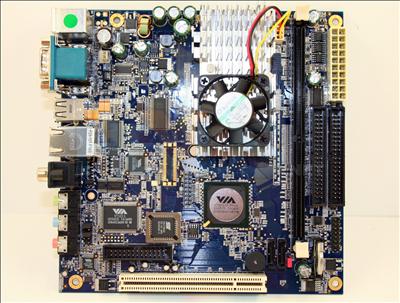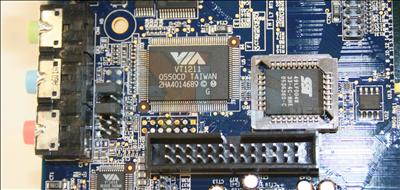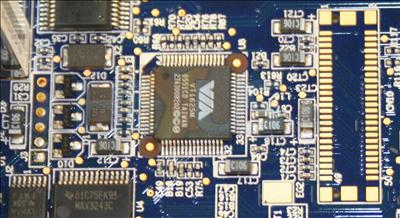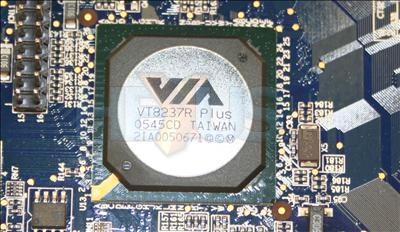VIA EPIA CN13000
The main feature on the mainboard is the heatsink cooling the northbridge and the CPU. The fan actually lies over the northbridge section with the CPU up the top, and we question the use of the fan at all. The processor is fairly easily passively cooled, as is the northbridge, so we presume VIA add a fan just to be on the safe side, not because it's honestly needed in a well ventilated chassis. The cool and frugal southbridge gets no cooling attention at all, as you can see.
The 240-pin DDR2 DIMM slot lies down the right hand side as we look at the board there, separating the rest of the board and the ATX power connector, ATA ports and front-panel connector pins.
You can see the multitude of VIA ICs dotted around (especially on the enlarged version, click the image for a look at that). The fan whines a bit but isn't overly loud to our ears, and you could certainly experiment with taking it off. If you remember back a good while to our review of Tranquil PC's EPIA-powered media center systems, you'll recall that Tranquil just used a decent copper mass and passive cooling to get rid of the heat, and even that was somewhat overkill.
The floppy port sits at the bottom of the PCB with the PCIc slot right at the bottom, providing the only peripheral expansion opportunity that's not USB. The rest of the mainboard, tiny as it is, is all about the backplane.
PS/2, serial, VGA, 4 x USB2.0, Ethernet, S-Video and composite video and the 8-channel audio connections are all found on the backplane.
The VT chips represent, bringing all the extra goodies to the EPIA CN13000. Let's have a look at the packaging and whatnot before we talk about the C7 a little, before rounding it up with perf chatter and a healthy conclusion.














